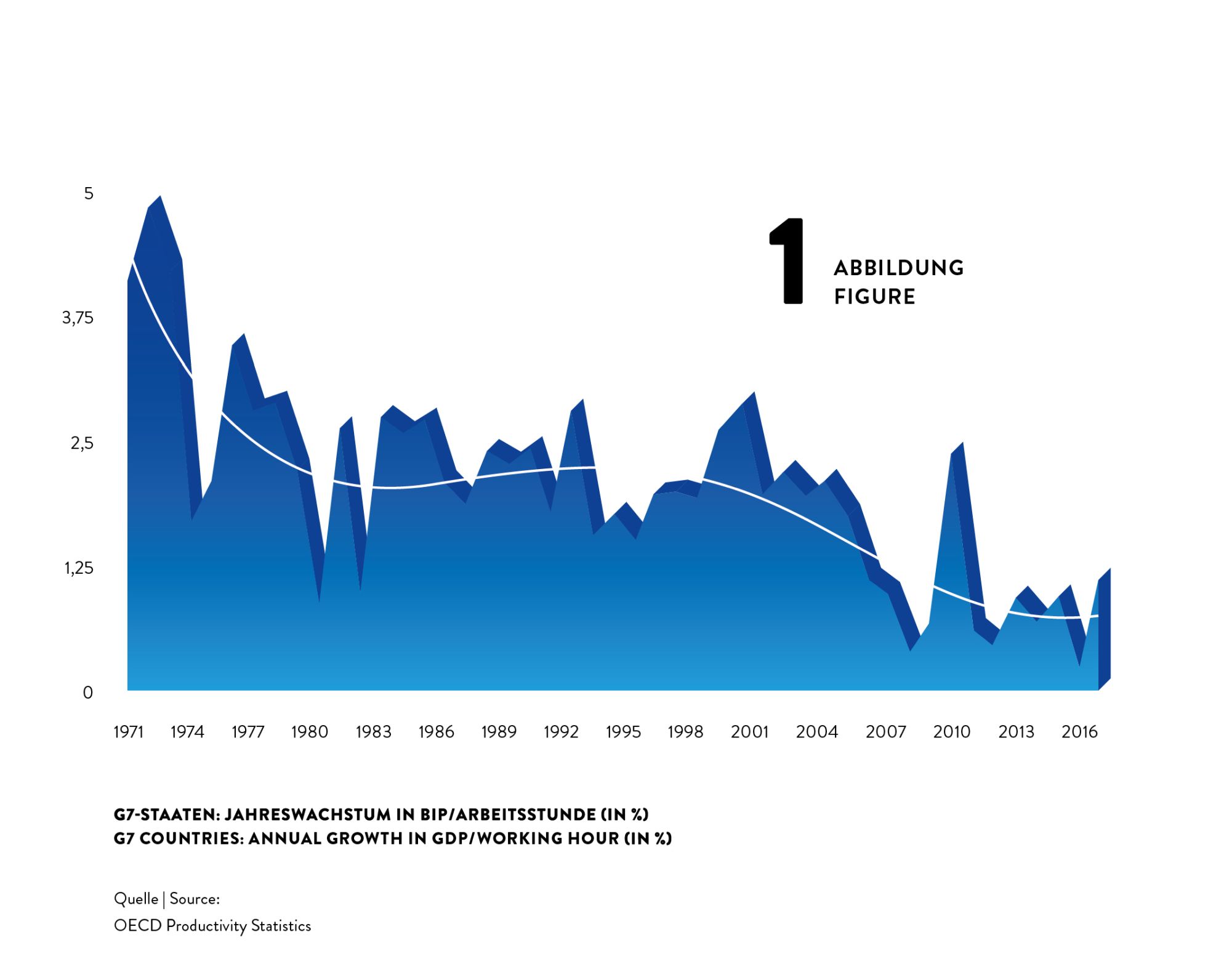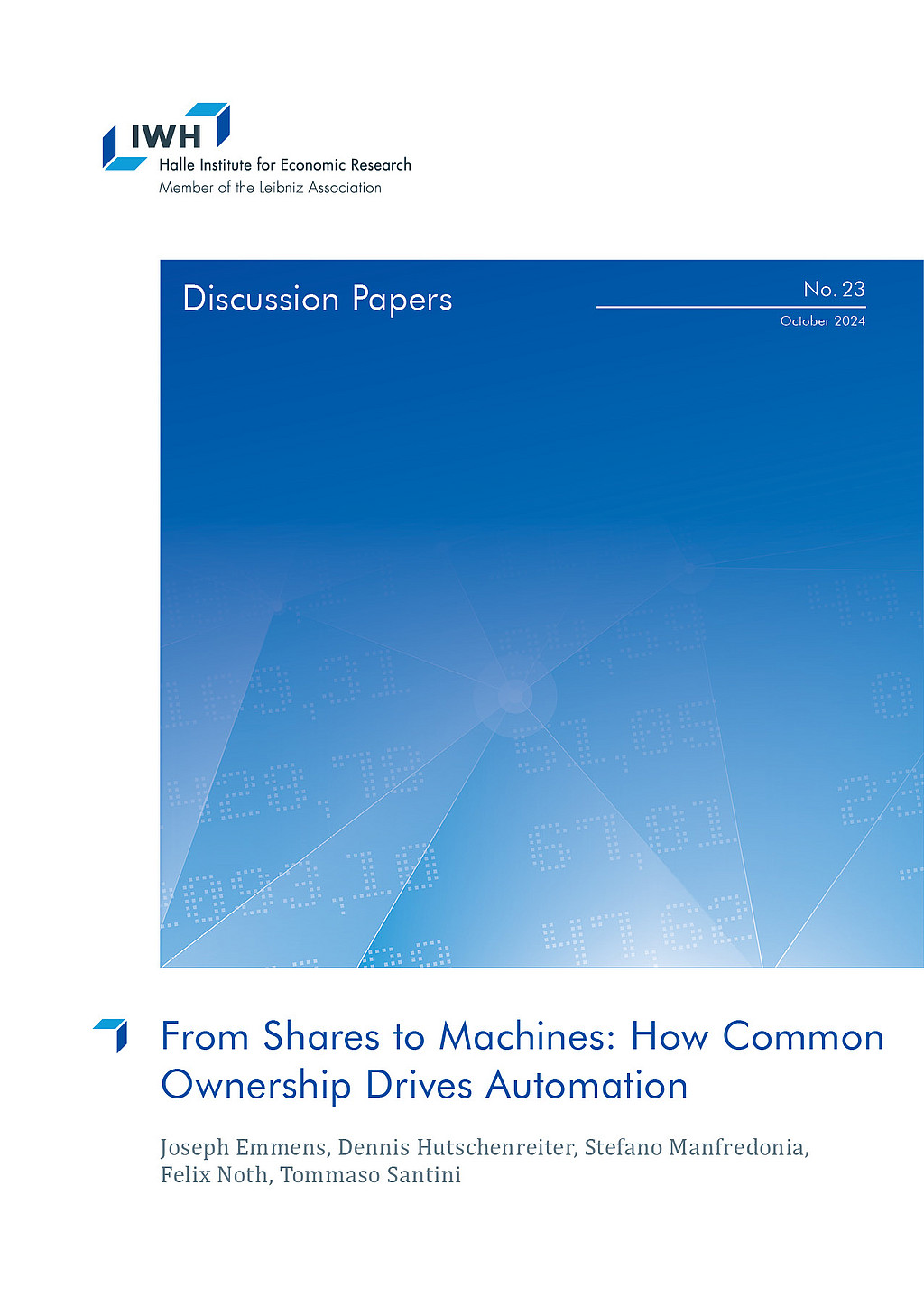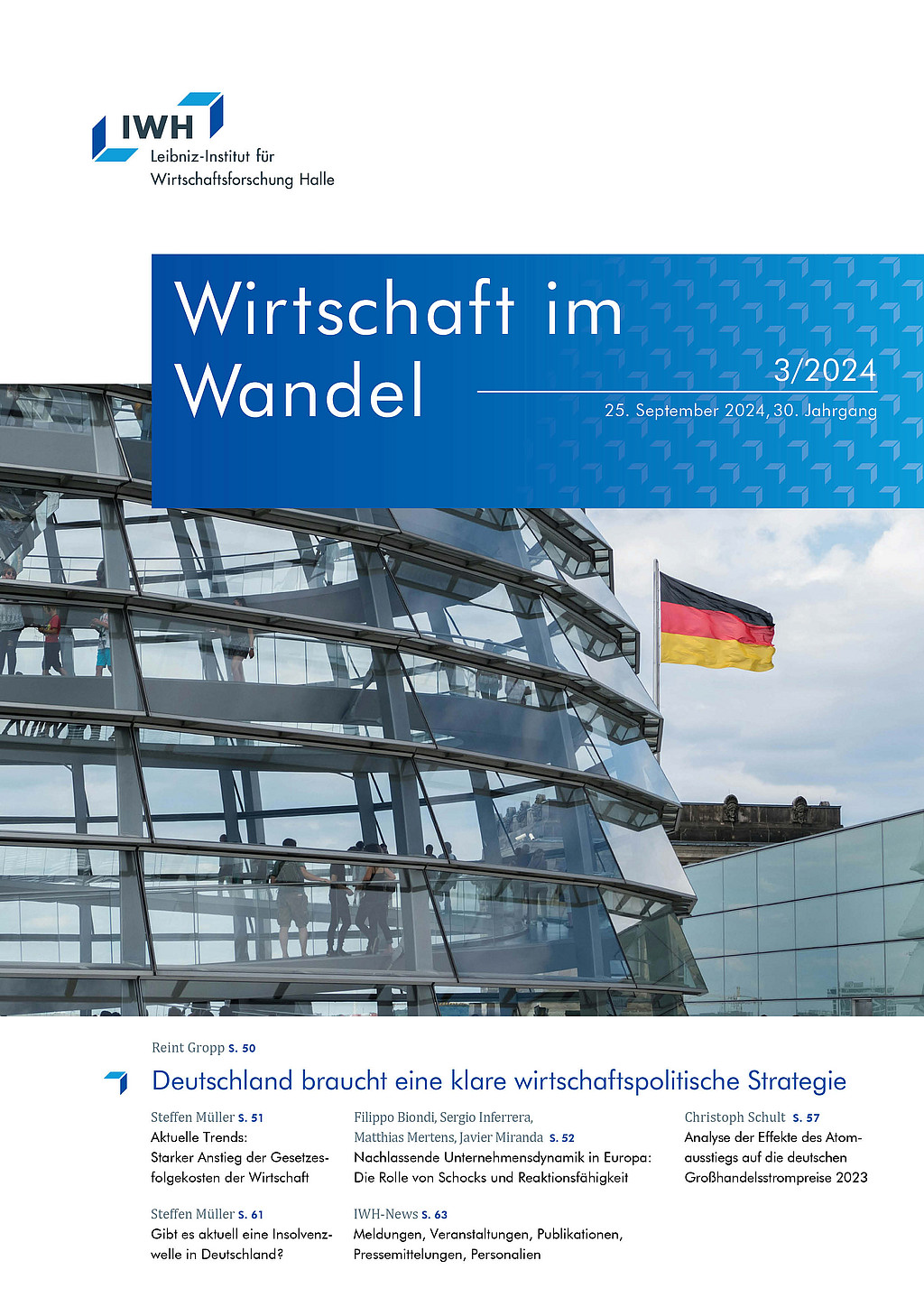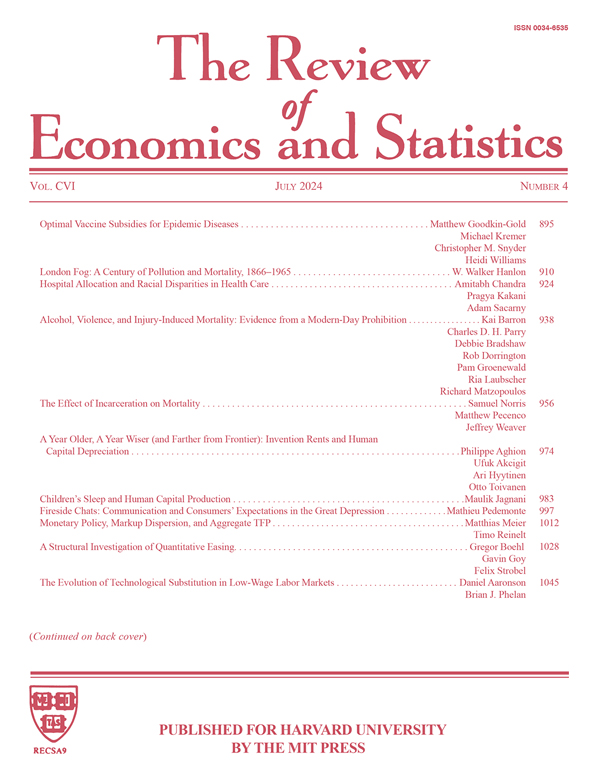Productivity: More with Less by Better
Available resources are scarce. To sustain our society's income and living standards in a world with ecological and demographic change, we need to make smarter use of them.
Dossier

In a nutshell
Nobel Prize winners Paul Samuelson and William Nordhaus state in their classic economics textbook: Economics matters because resources are scarce. Indeed, productivity research is at the very heart of economics as it describes the efficiency with which these scarce resources are transformed into goods and services and, hence, into social wealth. If the consumption of resources is to be reduced, e. g., due to ecological reasons, our society’s present material living standards can only be maintained by productivity growth. The aging of our society and the induced scarcity of labour is a major future challenge. Without productivity growth a solution is hard to imagine. To understand the processes triggering productivity growth, a look at micro data on the level of individual firms or establishments is indispensable.
Our experts

Department Head
If you have any further questions please contact me.
+49 345 7753-708 Request per E-Mail
President
If you have any further questions please contact me.
+49 345 7753-700 Request per E-MailAll experts, press releases, publications and events on “Productivity”
Productivity is output in relation to input. While the concept of total factor productivity describes how efficiently labour, machinery, and all combined inputs are used, labour productivity describes value added (Gross Domestic Product, GDP) per worker and measures, in a macroeconomic sense, income per worker.
Productivity Growth on the Slowdown
Surprisingly, despite of massive use of technology and rushing digitisation, advances in productivity have been slowing down during the last decades. Labour productivity growth used to be much higher in the 1960s and 1970s than it is now. For the G7 countries, for example, annual growth rates of GDP per hour worked declined from about 4% in the early 1970s to about 2% in the 1980s and 1990s and then even fell to about 1% after 2010 (see figure 1).

This implies a dramatic loss in potential income: Would the 4% productivity growth have been sustained over the four and a half decades from 1972 to 2017, G7 countries’ GDP per hour would now be unimaginable 2.5 times as high as it actually is. What a potential to, for instance, reduce poverty or to fund research on fundamentals topics as curing cancer or using fusion power!
So why has productivity growth declined dramatically although at the same time we see, for instance, a boom in new digital technologies that can be expected to increase productivity growth? For sure, part of the decline might be spurious and caused by mismeasurement of the contributions of digital technologies. For instance, it is inherently difficult to measure the value of a google search or another video on youtube. That being said, most observers agree that part of the slowdown is real.
Techno-Pessimists and Techno-Optimists
Techno-pessimists say, well, these new technologies are just not as consequential for productivity as, for instance, electrification or combustion engines have been. Techno-optimists argue that it can take many years until productivity effects of new technologies kick in, and it can come in multiple waves. New technology we have now may just be the tools to invent even more consequential innovations in the future.
While this strand of the discussion is concerned with the type of technology invented, others see the problem in that inventions nowadays may diffuse slowly from technological leaders to laggards creating a wedge between few superstar firms and the crowd (Akcigit et al., 2021). Increased market concentration and market power by superstar firms may reduce competitive pressure and the incentives to innovate.
Finally, reduced Schumpeterian business dynamism, i.e. a reduction in firm entry and exit as well as firm growth and decline, reflects a slowdown in the speed with which production factors are recombined to find their most productive match.
While the explanation for and the way out of the productivity puzzle are still unknown, it seems understood that using granular firm level data is the most promising path to find answers.
What are the Origins of Productivity Growth?
Aggregate productivity growth can originate from (i) a more efficient use of available inputs at the firm level as described above or (ii) from an improved allocation of resources between firms.
Higher efficiency at the firm level captures, e.g., the impact of innovations (Acemoglu et al., 2018) or improved firm organisation (management) (Heinz et al., 2020; Müller und Stegmaier, 2017), while improved factor allocation describes the degree of which scarce input factors are re-allocated from inefficient to efficient firms (‘Schumpeterian creative destruction’) (Aghion et al., 2015; Decker et al., 2021).
Most economic processes influence the productivity of existing firms and the growth and the use of resources of these firms and their competitors as well. The accelerated implementation of robotics in German plants (Deng et al., 2020), the foreign trade shocks induced by the rise of the Chinese economy (Bräuer et al., 2019), but also the COVID-19 pandemic, whose consequences are still to evaluate (Müller, 2021) not only effects on productivity and growth of the firms directly affected but at the same time may create new businesses and question existing firms.
While productivity can be measured at the level of aggregated sectors or economies, micro data on the level of individual firms or establishments are indispensable to study firm organisation, technology and innovation diffusion, superstar firms, market power, factor allocation and Schumpeterian business dynamism. The IWH adopts this micro approach within the EU Horizon 2020 project MICROPROD as well as with the CompNet research network.
As “creative destruction” may also negatively affect the persons involved (e. g., in the case of layoffs, Fackler et al., 2021), the IWH analyses the consequences of bankruptcies in its Bankruptcy Research Unit and looks at the implications of creative destruction for the society, e. g., within a project funded by Volkswagen Foundation searching for the economic origins of populism and in the framework of the Institute for Research on Social Cohesion.
Publications on “Productivity”

Robots, Occupations, and Worker Age: A Production-unit Analysis of Employment
in: European Economic Review, November 2024
Abstract
We analyse the impact of robot adoption on employment composition using novel micro data on robot use in German manufacturing plants linked with social security records and data on job tasks. Our task-based model predicts more favourable employment effects for the least routine-task intensive occupations and for young workers, with the latter being better at adapting to change. An event-study analysis of robot adoption confirms both predictions. We do not find adverse employment effects for any occupational or age group, but churning among low-skilled workers rises sharply. We conclude that the displacement effect of robots is occupation biased but age neutral, whereas the reinstatement effect is age biased and benefits young workers most.

From Shares to Machines: How Common Ownership Drives Automation
in: IWH Discussion Papers, No. 23, 2024
read publication
Nachlassende Unternehmensdynamik in Europa: Die Rolle von Schocks und Reaktionsfähigkeit
in: Wirtschaft im Wandel, No. 3, 2024
Abstract
<p>Wir untersuchen die Veränderung der Unternehmensdynamik in Europa seit 2000 anhand neuer Daten, die wir für 19 europäische Länder erhoben haben. In allen Ländern dokumentieren wir einen breit angelegten Rückgang der Unternehmensdynamik, der die meisten Wirtschaftszweige und Firmengrößenklassen betrifft. Große und ältere Unternehmen verzeichnen den stärksten Rückgang der Unternehmensdynamik. Gleichzeitig geht der Anteil an Personen, die in jungen Unternehmen arbeiten, zurück. In Übereinstimmung mit Ergebnissen aus den USA reagieren Unternehmen in Europa weniger stark auf Produktivitätsveränderungen als früher („Reaktivität von Firmen“), was einen Teil des Rückgangs der Unternehmensdynamik erklärt. Im Gegensatz zur bisherigen Evidenz für die USA hat sich in Europa jedoch auch die Dynamik von Produktivitätsschocks abgeschwächt, was einen weiteren Teil des Rückgangs der Unternehmensdynamik erklärt. Für das deutsche Verarbeitende Gewerbe berechnen wir, dass der Rückgang der Reaktivität von Firmen ca. 40% des Rückgangs der Unternehmensdynamik erklärt, während die Abschwächung von Produktivitätsschocks 60% des Rückgangs der Unternehmensdynamik erklärt. Diese Prozesse deuten darauf hin, dass Marktfriktionen, wie beispielsweise Firmenmarktmacht in Europa, zu zunehmenden Fehlallokationen führen und dass die Innovationsprozesse sich abgeschwächt haben, woraus eine geringere Umverteilung von Marktanteilen zwischen Firmen resultiert.</p>

Interview: Gibt es aktuell eine Insolvenzwelle in Deutschland?
in: Wirtschaft im Wandel, No. 3, 2024
Abstract
<p>In den letzten Wochen gab es zahlreiche Medienberichte zu Insolvenzen in Deutschland, darunter einige bekannte Namen. Befinden wir uns in einer Insolvenzwelle? Dazu sprechen wir mit dem Insolvenz-Experten Professor Dr. Steffen Müller vom Leibniz-Institut für Wirtschaftsforschung Halle (IWH).</p>

Productivity, Place, and Plants
in: Review of Economics and Statistics, No. 5, 2024
Abstract
Why do cities differ so much in productivity? A long literature has sought out systematic sources, such as inherent productivity advantages, market access, agglomeration forces, or sorting. We document that up to three quarters of the measured regional productivity dispersion is spurious, reflecting the “luck of the draw” of finite counts of idiosyncratically heterogeneous plants that happen to operate in a given location. The patterns are even more pronounced for new plants, hold for alternative productivity measures, and broadly extend to European countries. This large role for individual plants suggests a smaller role for places in driving regional differences.



